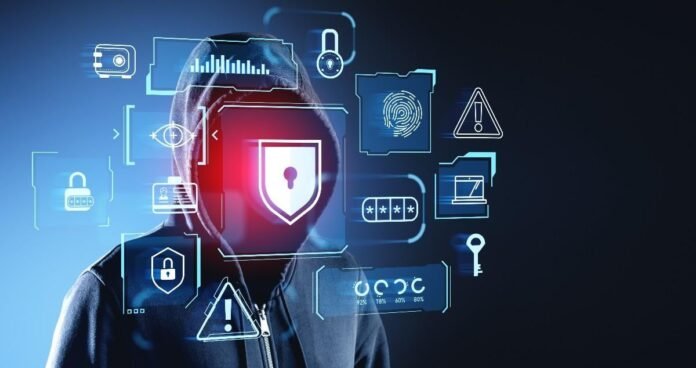The Cybersecurity Challenge in the Age of Renewable Energy
When you glance at your smart meter to check your daily electricity usage, the thought of a cyberattack is likely far from your mind. Yet, Internet of Things (IoT) devices, including smart meters, can serve as easy access points for cybercriminals. As the energy sector increasingly embraces digital technologies, the vulnerabilities associated with these advancements are becoming more pronounced.
The Rising Tide of Cyberattacks
In 2023, there was a staggering 200% increase in cyberattacks targeting utilities, with the average cost of data breaches in the energy sector exceeding $4 million. Europe witnessed a doubling of cyberattacks in the power sector between 2020 and 2022, while the United States experienced a nearly 70% surge in attacks on utilities in 2024 compared to the previous year. This alarming trend underscores the urgent need for utility companies and governments to address cybersecurity vulnerabilities.
Renewables: A Prime Target
The renewable energy sector has emerged as a prime target for cybercriminals. As the world transitions to cleaner energy sources, the rapid adoption of digital technologies to manage and integrate renewables creates new potential attack surfaces. For instance, integrating renewable projects and battery energy storage systems requires sophisticated software, which can introduce cybersecurity risks across the entire system. The growing number of stakeholders involved in renewable energy projects, spanning various sectors, further amplifies the likelihood of cyber threats.
The Growing Cyber Threat to Renewable Energy
Global renewable power capacity surged by 473 gigawatts (GW) in 2023, marking a 14% increase from the previous year, according to the International Renewable Energy Agency (IRENA). The International Energy Agency (IEA) anticipates that 5,500 GW will become operational by 2030. While this growth is promising for environmental goals, it also presents opportunities for cybercriminals to exploit vulnerabilities in these increasingly complex systems.
Digital technologies such as IoT, artificial intelligence (AI), and middleware are now essential for utility companies striving to meet rising energy demands. These technologies enhance efficiency, improve demand forecasting, and optimize grid performance in real time. However, they also introduce new complexities and risks. For example, solar energy systems are susceptible to various cyberattacks, while wind farms can be disrupted through compromised remote control mechanisms. Battery energy storage systems and electric vehicle charging stations are similarly vulnerable.
In 2022, the Federal Bureau of Investigation (FBI) issued a warning to the U.S. renewable energy industry, stating that “malicious cyber actors may seek to disrupt power-generating operations, steal intellectual property, or ransom information critical for normal functionality.” A notable incident involved a denial-of-service attack on a private solar company, which resulted in the loss of visibility over 500 MW of wind and solar sites across multiple states.
In the UK, renewables companies faced approximately 1,000 attempted cyberattacks daily last year. While these attempts often go unnoticed, they pose a significant threat to energy security. A high-profile incident in 2022 saw a cyberattack on a satellite communications network disrupt 5,800 wind turbines in Germany, highlighting the interconnectedness of modern energy systems and the vulnerabilities that come with it.
Protecting the Energy Transition
The increasing risk of cyberattacks is compounded by a shortage of cybersecurity experts in the energy sector. While nearly three-quarters of the industry are utilizing generative AI for cybersecurity operations, a 42% shortfall in cybersecurity personnel persists, according to a Boston Consulting Group survey. This gap in expertise makes it challenging for organizations to effectively combat cyber threats.
To address this issue, the U.S. government has proposed the Cyber PIVOTT Act, which aims to introduce scholarship programs in exchange for government service to bolster cybersecurity skills. In Europe, the Cybersecurity Skills Academy was launched in 2023 to tackle the growing skills gap. Additionally, the EU’s Network and Information Security Directive aims to harmonize cybersecurity regulations across member states, particularly for critical infrastructure like energy.
Experts agree that energy companies must take proactive measures to address cybersecurity challenges. Basic cybersecurity training across organizations is essential, as is the implementation of monitoring systems to protect critical infrastructure. Solutions like Mitsubishi Heavy Industries’ InteRSePT can detect anomalous behavior across the control networks of power plants and manufacturing facilities, providing an additional layer of security.
Conclusion
As the energy transition progresses, the industry must balance the benefits of digitalization with the need for robust cybersecurity measures. The increasing digitization and decentralization of energy grids heighten the risk of cyberattacks, potentially disrupting energy supply and undermining progress toward a more sustainable power system.
To stay ahead of these threats, utilities, governments, and technology providers must collaborate to strengthen cybersecurity defenses, implement robust regulatory frameworks, and invest in next-generation security solutions. The future of renewable energy depends not only on technological advancements but also on the resilience of the systems that support them.


